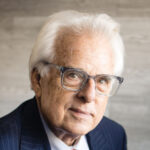Here we go again! Now that human cloning has been done with adult cells, the pro-cloning crowd pushes it using junk biology–just as they did in years past.
First at bat: The Washington Post in an editorial. It acknowledges that embryonic stem cell research is controversial because it destroys embryos. Then, it pretends that human cloning [SCNT] doesn’t involve embryos. From the editorial:
Scientists have been working on something called somatic cell nuclear transfer, which involves taking the nucleus out of a human egg and replacing it with the nucleus from an adult cell. Last week’s announcement came from researchers who had refined the nuclear transfer process and achieved the results they were looking for — pluripotent human stem cells.
No, they made human embryos asexually–e.g. the same cloning technique used to make Dolly–which they then destroyed as occurs in ESCR to obtain embryonic stem cells.
In other words, same controversy, squared. The embryos in cloning are not so-called “leftovers” (as if that makes it okay) that would die anyway. The cloned embryos were created as a method of manufacture. Not only that, but in this circumstance, they were manufactured in order to destroy them in experiments.
By the way, the reason reproductive cloning could work in theory is that a baby starts as an embryo–whether made by mixing sperm and egg or through cloning. Thus, before Dolly was a lamb, she was a sheep embryo. She was always the same organism. So too, a cloned human embryo.
Reading the Post, you’d think that cloned embryos are not really human:
There is, moreover, a clear ethical distinction between cloning a human’s cells in order to redeploy them in medical treatment and growing a genetic copy of a human being.
But the act of cloning is makes a new human being! Once the cloning works, a human organism exists. After that, it is just a matter of what you do with the nascent human that was created. Destroy it for stem cells, gestate to fetal stage and abort, or bring it to birth. Same human being, different fates.
The editorial–as ever in this debate–supports drawing “lines” to prevent only what could be done tomorrow, but permitting what can be done today:
As long as scientists do not cross ethical lines much farther from where they are now — lines that Congress could write into federal law — researchers should have the flexibility to go in whichever direction is scientifically useful.
Do they really believe that bilge?
As we all know, tomorrow never comes. When the next step is eventually taken, the Post will say, now we have to let this be done, but don’t worry, we’ll outlaw what be done tomorrow, until it can be done, then it will be allowed.
Here’s a classic of the genre: Remember the syndicated columnist Ellen Goodman? She wrote back in the 1980s that IVF should be allowed to develop, but that we should tell the scientists we wouldn’t let them take steps in the future that would treat embryos like so much “caviar” to be discarded.
When I pointed out to her twenty years later that she explicitly supported doing that very thing in the ESCR debate, she shrugged, telling me, “My lines have changed.”
They always do. And that’s why the Post’s editorial actually advocates for an anything goes course (eventually) in human cloning.
Post Script: Proving my point about the non-existing lines of pro-cloners, Gene Tarne notes that on October 2, 1994, the Post strongly editorialized against creating human embryos for destructive resource. From “Embryos: Drawing the Line:”
The creation of human embryos specifically for research that will destroy them is unconscionable.
That was then. This is now. Like I said…
Author Profile

Latest entries
- BlogJanuary 27, 2015Ready or Not: Here Comes 2015 in Bioethics!
- BlogOctober 20, 2014A Case of Surrogacy’s Gordian Knot
 BlogAugust 19, 2014Transhumanism’s Eugenic Authoritarianism
BlogAugust 19, 2014Transhumanism’s Eugenic Authoritarianism- BlogAugust 13, 2014Suicide Cult Pushes Home Made Suicide Kits


